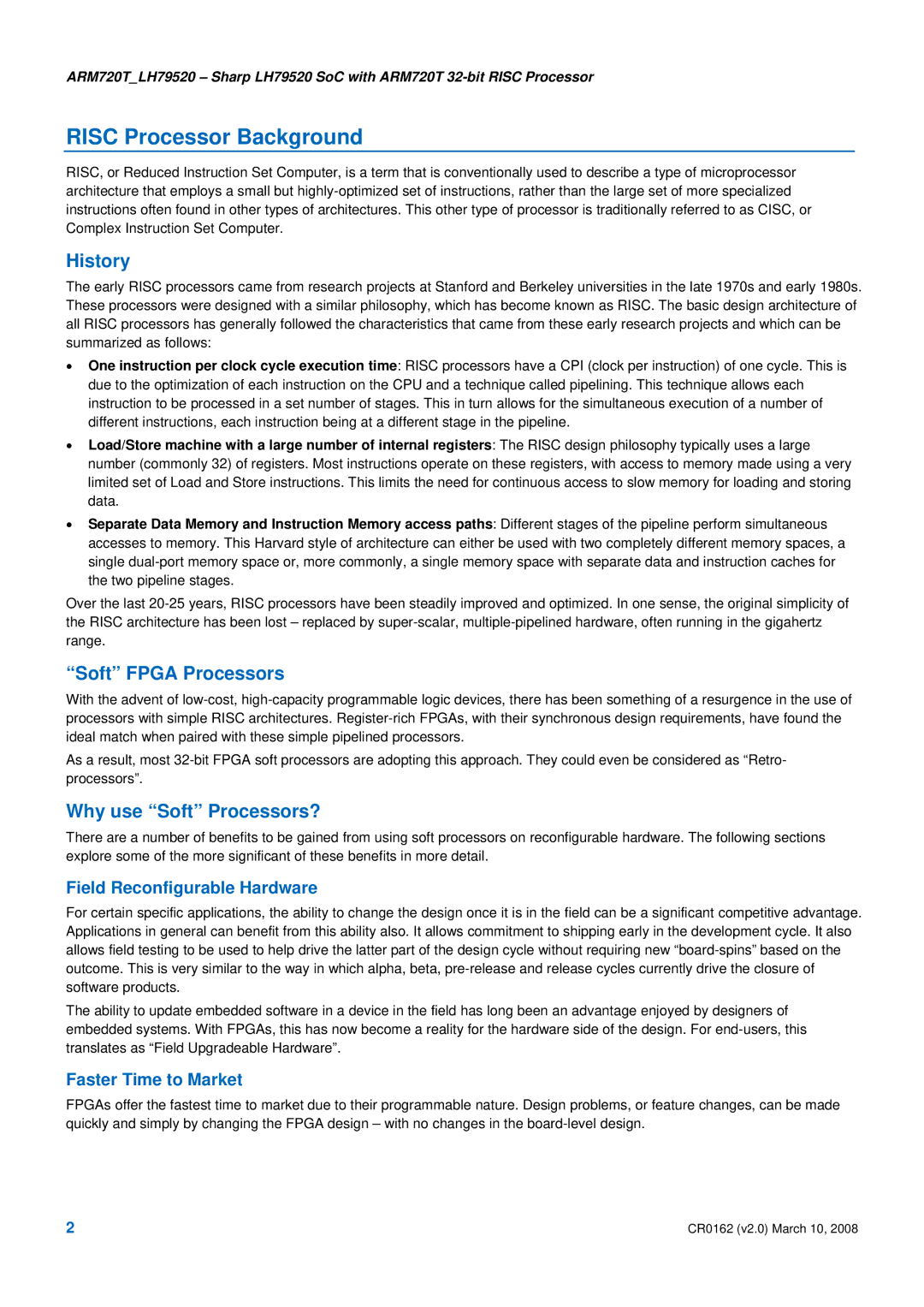ARM720T_LH79520 – Sharp LH79520 SoC with ARM720T
RISC Processor Background
RISC, or Reduced Instruction Set Computer, is a term that is conventionally used to describe a type of microprocessor architecture that employs a small but
History
The early RISC processors came from research projects at Stanford and Berkeley universities in the late 1970s and early 1980s. These processors were designed with a similar philosophy, which has become known as RISC. The basic design architecture of all RISC processors has generally followed the characteristics that came from these early research projects and which can be summarized as follows:
•One instruction per clock cycle execution time: RISC processors have a CPI (clock per instruction) of one cycle. This is due to the optimization of each instruction on the CPU and a technique called pipelining. This technique allows each instruction to be processed in a set number of stages. This in turn allows for the simultaneous execution of a number of different instructions, each instruction being at a different stage in the pipeline.
•Load/Store machine with a large number of internal registers: The RISC design philosophy typically uses a large number (commonly 32) of registers. Most instructions operate on these registers, with access to memory made using a very limited set of Load and Store instructions. This limits the need for continuous access to slow memory for loading and storing data.
•Separate Data Memory and Instruction Memory access paths: Different stages of the pipeline perform simultaneous accesses to memory. This Harvard style of architecture can either be used with two completely different memory spaces, a single
Over the last
“Soft” FPGA Processors
With the advent of
As a result, most
Why use “Soft” Processors?
There are a number of benefits to be gained from using soft processors on reconfigurable hardware. The following sections explore some of the more significant of these benefits in more detail.
Field Reconfigurable Hardware
For certain specific applications, the ability to change the design once it is in the field can be a significant competitive advantage. Applications in general can benefit from this ability also. It allows commitment to shipping early in the development cycle. It also allows field testing to be used to help drive the latter part of the design cycle without requiring new
The ability to update embedded software in a device in the field has long been an advantage enjoyed by designers of embedded systems. With FPGAs, this has now become a reality for the hardware side of the design. For
Faster Time to Market
FPGAs offer the fastest time to market due to their programmable nature. Design problems, or feature changes, can be made quickly and simply by changing the FPGA design – with no changes in the
2 | CR0162 (v2.0) March 10, 2008 |
